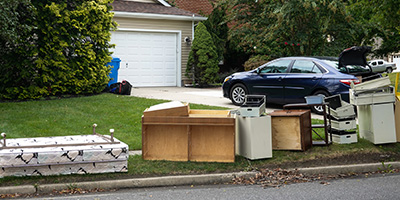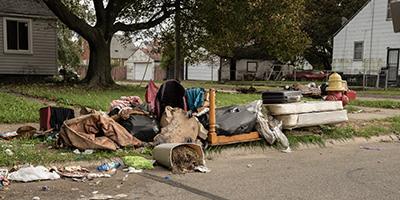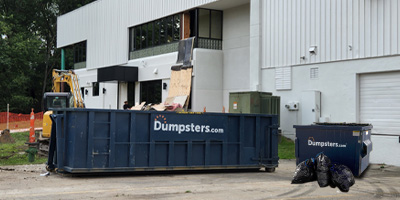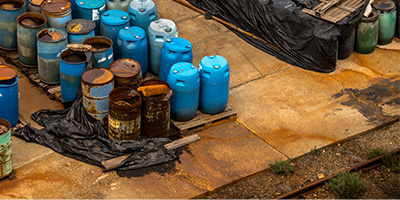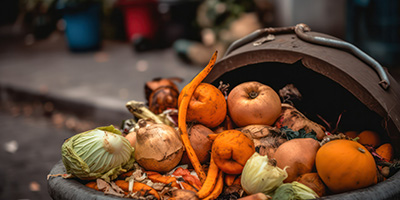All the Recycling Rules You Need to Know
Nearly 91% of Americans have access to a recycling program. Learn how to recycle properly with our simple guide.
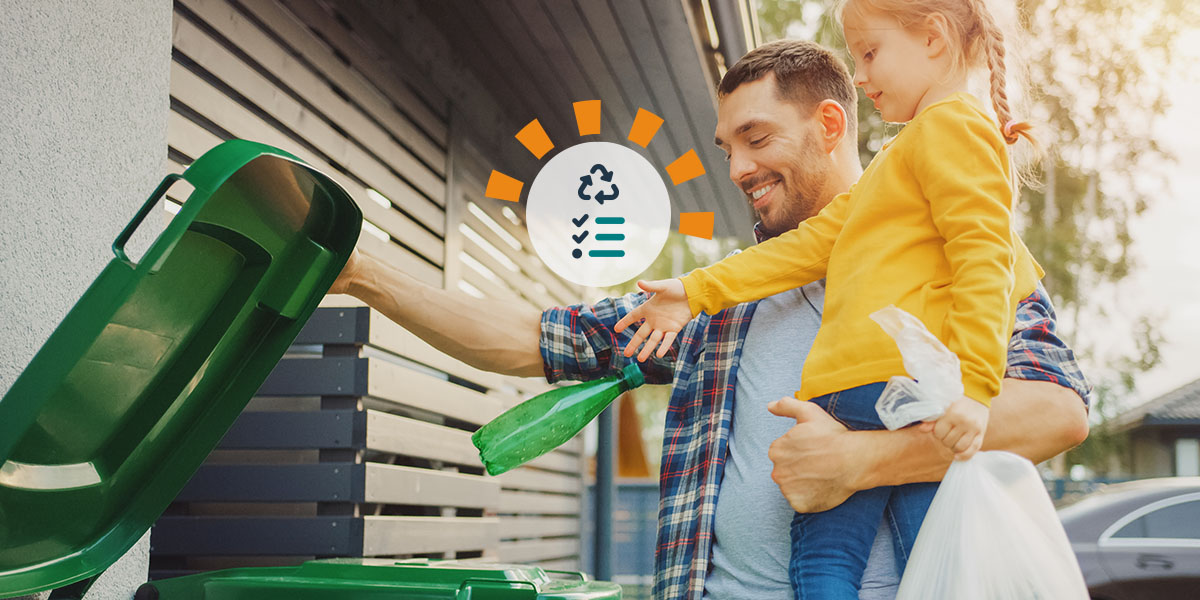
How to Recycle Right: The Ins and Outs of Proper Recycling
The good news is that Americans recycle 94 million tons of waste each year. The bad news is that, even with 91% of the U.S. having access to recycling programs, there is still 146 million tons of landfilled waste.
Why aren’t we recycling more often? Well, a big part of the answer is that plenty of people are confused by the rules of recycling. Use this informative guide to learn what materials are commonly recyclable and how to recycle them properly.
Recycling FAQs
What plastics can't be recycled?
Plastics numbered seven, like polycarbonate and BPA, are typically excluded from recycling centers because they're difficult to recycle. There are seven types of plastics — polyethylene terephthalate, high-density polyethylene, polyvinyl chloride, low-density polyethylene, polypropylene, polystyrene, and more — and generally, plastics numbered one through six are accepted at most facilities.
What percentage of recycling actually gets recycled?
In 2017, for example, 66% of paper and cardboard, 27% of glass and 8% of plastics were recycled. Plastic recycling presents the biggest challenge because plastic is often contaminated by other materials.
How can I start recycling at home?
Start by researching what recycling options your local government offers. From there, you can build a plan for the waste you toss from your home most often. Just make note of what can be recycled and make sure everyone in your household understands too.
What Should I Put in the Recycle Bin?
While it’s possible to find a way to recycle nearly any type of material, curbside recycling programs and many city-sponsored collection events typically accept only the most common recyclable materials. Why? Simply because the machines often used by these companies are designed for the following list of recyclable materials:
- Paper
- Cardboard
- Plastic bottles and containers
- Aluminum cans
- Steel cans
- Glass
How Much Does the U.S. Recycle Each Year?
According to the EPA, in 2018 the U.S. produced 292.4 million tons of waste, and recycled or composted 93.9 million tons of that total amount. This makes the current recycling rate in the United States around 32%. However, the agency is trying to increase that number to 50% by the year 2030 through participation incentives and innovation across multiple value chains.
Many U.S. households can contribute to this goal and make a positive impact on the environment by learning to recycle properly. If you're unsure where to start, a great place would bet to look into what recycling programs your community offers.
How to Recycle Properly
Recycling correctly is the key to the entire process. With single-stream recycling, one mistake could cause an entire recycling bin to be sent to the landfill. While that may seem like an extreme measure, it’s a necessary safety precaution. Improper recycling can lead to contamination of the materials, damaging and clogging of the recycling equipment at sorting facilities and ultimately, higher bills on your end as recycling facilities have to increase their budget to offset the costs of recycling incorrectly.
Use the list below for some general rules and guidelines to make sure that you’re recycling correctly.
11 Important Recycling Rules to Follow
- Do your homework. To really learn how to recycle properly, research the specific rules in your location.
- Leave your labels on. They will naturally burn or melt off during the recycling process, so removing them will just waste your time.
- Take out the plastic pump. While many soap pumps are plastic, they also contain a lot of pieces that are too small to recycle once separated.
- Recycle most paper items. If the paper can be torn, it can be recycled. Just place any shredded paper in a labeled paper bag.
- Know how to handle the lids. If the lids are the same material, leave them on. Take the lid off and toss them both in the bin it they're different.
- Take the tape completely off. Tape on boxes are not recyclable. Remove any tape before you recycle them.
- Remember the sticky note rule. Small pieces can break the sorting machines at the facility. If it’s smaller than a sticky note, don’t recycle it.
- Keep plastic bags out of the bin. They will clog the machinery. However, most grocery stores will accept and recycle them for you.
- Recycle even what can’t go in your bin. While some items can't be regularly recycled, they can be recycled through specialized programs.
- Empty and rinse out drink and food containers. Remnants can leak onto other materials, making them unrecyclable.
- Plastic numbers are outdated but still important. Plastic containers have a number inside the recycling symbol on them. 1 and 2 are accepted curbside but most recycling centers sort out your plastic and remove any that can’t be recycled. So, don’t be afraid to toss 3-7 in your recycling bin.

Keep In Mind
Your city or county solid waste district should have specific rules and restrictions that build on this list. Always check with them to ensure you’re meeting their standards.
Use Your New-Found Recycling Knowledge Wisely
The benefits of recycling can’t be overstated. Even if you aren’t ready to make all of the changes suggested in this guide, just use one or two to make a world of difference over time. There’s no time like the present to make a positive impact in the world.
Other Sources
Cho, Renee. (2020, March 13). Recycling in the U.S. Is Broken. How Do We Fix It? Retrieved from Columbia Climate School, State of the Planet
The Almanac Team. (2023, April 13). Plastics Recycling Chart. Retrieved from The Almanac.
National Recycling Goal: Recycling Rate Measurement Comment Period. (2023, April 3). Retrieved from United States Environmental Protection Agency.
National Overview: Facts and Figures on Materials, Wastes and Recycling. (2022, December 3). Retrieved from United States Environmental Protection Agency.
What Do You Think?
Have thoughts on recycling efforts? We want to hear about it. Head over to Twitter or Facebook,
and use #dumpstersblog to join the conversation.


